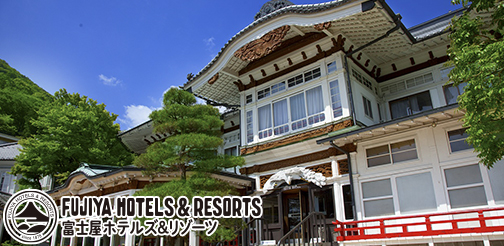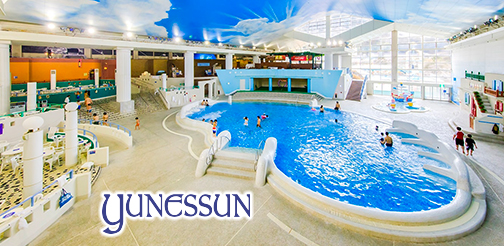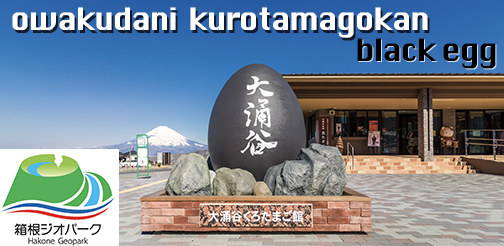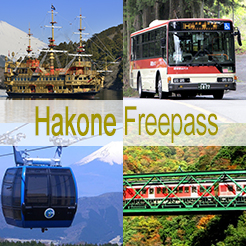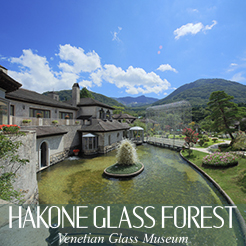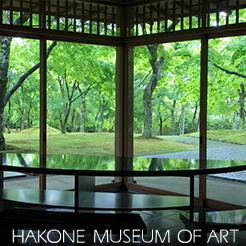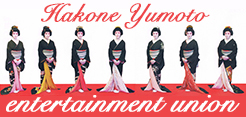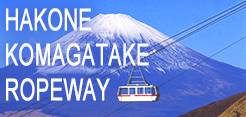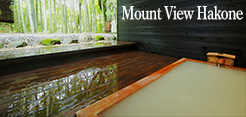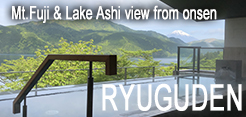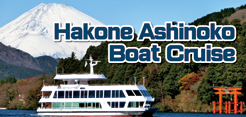DAY1
#1: Forest Adventure
Address: 749-1 Chanohana, Hakone-machi, Ashigarashimo-gun, 250-0311
Website: https://www.foret-aventure.jp/hakone.html
The Forest Adventure is a fun experience for all ages (unless you’re deathly afraid of heights). Forest Adventure is a large company specializing in ‘athletics courses’ with locations all over Japan. The Hakone location is very close to the Hakone-Yumoto station, and it’s about a four-minute drive on the bus that departs from the bus stop right outside the central station. I do not recommend walking the way there, as Hakone is infamous for its steep inclines.
Forest Adventure is built into the natural forest present throughout Hakone. In fact, roughly 96% of Hakone is designated as a protected forest. Hakone is also listed as a Geopark by UNESCO for preserving the city’s natural landscape.
The Hakone Forest Adventure location has several levels people can choose from, such as the Adventure and Canopy course. Several other courses, such as the Discovery Course, Kids Course, ZIP Trip Tour, and Trek Course, are available among their other locations. The Canopy Course is designed for kids and those without prior experience with zipline courses. It’s also shorter and takes roughly an hour for the average person to go through it. The Adventure course is more dynamic and longer, designed to take anywhere from an hour and a half to two hours. For those with lots of experience, it’s possible to finish the course in roughly an hour.
By being built directly into the forest, those participating in the Forest Adventure can experience both breathtaking forest views and exhilarating, thrilling obstacles. There are numerous long ziplines on the Adventure course, and even rock climbing walls and trampolines available after people finish the course of their choice. I highly recommend the Forest Adventure location for those interested in thrill experiences.
#2: Yunessun
Address: 1297 Ninotaira, Hakone-machi, Ashigarashimo-gun, 250-0407
Website: https://www.yunessun.com/
Yunessun is an aquatic theme park that’s been around for ages! But that doesn’t negate the many new attractions that Yunessun has added to its roster in the last few years. To be completely honest, it’s possible to spend an entire day here.
Yunessun has the typical features of a waterpark, including a big central pool designed to mimic the Aegean sea of Greece (there are even paintings of Santorini all over the walls), outdoor pools, and waterslides. Some outdoor pools are cold with built-in waterfalls, whereas the others mimic Japan’s onsens and feel like a warm bath. There’s an aquarium-themed pool where small fish swim around their fish pools built into the ‘caves’ surrounding the pools. A bit further removed from the main outdoor area is a multi-tiered onsen that gets its water from a trickling waterfall on the left-hand side. It’s possible to see many sights from the tiered onsen, including numerous mountains and bodies of water.
Some of Yunessun’s key attractions include a coffee-themed, sake-themed, wine-themed, and green-tea-themed onsen. The coffee and wine used in the baths are locally sourced within Hakone: the coffee is sourced from MMC Mitsumoto Coffee Co.! Smaller bath attractions include feet treatments run by small flesh-eating fish (it feels like soft tickles on your feet!) and dry sauna rooms, which include a Finish sauna, hot-stone room, and an aroma room.
Along the sides of the compound are numerous rest areas and restaurants for customers to grab something to eat. If you’re ever feeling thirsty, there are also several drink vending machines that are charged directly onto a wristband you’re given when you first enter Yunessun. You can also borrow bathing suits and towels at the entrance.
If you’re looking for a more Japanese, classic onsen experience, you should check out Mori-no-Yu, which has open-air baths. In Japan, an onsen is entered completely naked (unlike the rest of Yunessun’s waterpark). The baths available include cypress baths, collagen baths, pottery baths, lie-down baths, indoor baths, and more. It’s also possible to book private rooms for you and your family to fully relax. Numerous rooms allow you to sleep, eat, and get some rest around the Yunessun compound. If you want to shop, there’s also a ‘Mio Mall’ with many small toys, plushies, food, and small goods to take home.
One thing to note is that all visitors must cover tattoos in the Yunessun compound (either with a patch or a rashguard). If you’re going to enter Mori-no-Yu, you may not have any tattoos. This practice is common throughout Japan, as tattoos are typically associated with criminal activity.
#3: Hakone Craft House
Address: 1300 Gora, Hakone-machi, Ashigarashimo-gun, 250-0408
Website: http://www.crafthouse.org/
Hakone Craft House is another hidden gem in Hakone. Many things on this list are relatively hands-off in terms of taking workshops and creating something of your own. But the Hakone Craft House specializes in glass artworks, such as Edo kiriko, glass blowing, sandblasting, lampwork and vintage beads, and more. The shop is easily accessible by bus and is located in Hakone Gora Park.
Edo kiriko is essentially ‘cut glass’ in Japanese. The art form was created in the 19th century and modeled after European glassware at the time. The product of Edo kiriko is akin to kaleidoscopes: when lights hit the cut parts of the glass, there are different colors and light patterns which shine through the homeware. At the Hakone Craft House, you can practice this art using an industrial glass cutter, and cut glass ranging from cups and mugs to jewelry pieces.
Another specialty of the Hakone Craft House is glass blowing. In the Hakone Craft House, there are a variety of goods you can create using the glass-blowing technique. The staff first prepares a glass ball on a bar, to which you can add different colors and designs. The most fun part of the process is blowing and shaping the glass yourself and watching the glass cooling process. Throughout the entire firing stage, you are still under the care of the helpful staff who not only keep you safe but also provide advice on getting the desired shape and pattern of glassware.
The Craft House also has an in-house gift shop showcasing the many different classic arts of Japan, ranging from small jewelry boxes to kits of wagashi candy, kompeito, and tea available in the store. If you’re ever in a rush and worry about bringing the goods back home, the Hakone Craft House also offers a delivery service and can safely mail your creations to wherever you need the goods to be delivered.
#4: Owakudani
Address: Sengokuhara, Hakone-machi, Ashigarashimo-gun, 250-0631
Website: http://www.kanagawa-park.or.jp/owakudani/
Many resources are already online detailing the sights and history surrounding Owakudani, one of Hakone’s most famous – if not the most famous – sights. The smoke that billows from Owakudani is so large that you can see it from a number of the spots on the list, such as the Hakone Venetian Glass Museum.
In short, Owakudani is a natural crater formed by the last eruption of Mount Hakone several thousand years ago. Owakudani is still a volatile site, and multiple times a year, the staff issue warnings and closures due to excessive sulfur production. Around the main site, you can see many small signs and pop-ups advertising a black egg, a specialty of Hakone only available due to a chemical reaction from the geothermal energy and volcanic gas emitting from the main crater. Be sure to try one while you’re there!
Besides checking out some of the small tourist shops and food stalls that line Owakudani, if you have the time, try going on the ropeway! You get an incredible view of Owakudani and Japan’s most famous landmark, Mt. Fuji.
Hakone is also known as one of Japan’s art hubs, partly due to the extensive list of museums in the area. But don’t let the name fool you — many of these museums have interactive activities and hidden gems that stray off the beaten path.
DAY2
#1: Hakone Open-Air Museum
Address: 1121 Ninotaira, Hakone-machi, Ashigarashimo-gun, 250-0407
Website: https://www.hakone-oam.or.jp/
The Hakone Open-Air Museum is slightly harder to access by bus, but it’s a short downhill walk between the closest bus stop and the museum. On the way, you can sneak a peek at Hakone’s natural landscape, some small cafes (including one in a trailer!), and local pottery craft houses.
The Hakone Open-Air Museum has a restaurant that overlooks the mountainside and some artwork throughout the park. The restaurant, called Chokoku-no-Mori dining, has a rotating daily menu with seasonal pasta. If you get hungry throughout the trip, you can also stop by the Hakone Open-Air Museum Cafe, placed halfway through the sculpture park and looks like a sculpture itself.
The Hakone Open-Air Museum has several exhibits, including a more typical art exhibit with 23 sculptures from artists such as Jean Dubuffet, Miro, Giacomo Balla, and more. They have a Picasso Pavillion, which pays homage to all of Picasso’s works and his life as a whole.
That being said, my biggest recommendations include the Symphonic Sculpture and the Woods of Net. The Symphonic Structure is hard to miss: it’s a tall tower-like structure covered in stained glass. A spiral staircase in the middle leads to the observation deck at the top level, where it’s possible to overlook the entire museum. It’s worth it no matter the weather: the observation deck has a cooling effect even on exceedingly hot days. The stained glass is also amusing to look at as you walk up and down the staircase.
The Woods of Net is next to a giant white maze you can explore freely. The Woods of Net is an interactive experience for smaller kids (~12 years old). Kids can climb atop the knitted nets spread around a sizeable wood-like structure. The nets include small tunnels and trampoline-like surfaces that are sure to keep little kids occupied as you explore the maze, look at the sculpture collection, check out the cafes, and more.
#2: Hakone Venetian Glass Museum
Address: 940-48 Sengokuhara, Hakone-machi, Ashigarashimo-gun, 250-0631
Website: http://hakone-garasunomori.jp/
The Hakone Venetian Glass Museum is one popular tourist attraction in Hakone. Easily accessible by bus, the Hakone Venetian Glass Museum typically has a line outside the compound before opening. That being said, the museum’s interior is expansive and not as crowded as it may seem at first glance.
The most popular attractions surround the outdoor glass sculptures placed around the museum. I highly recommend taking a handful of pictures on the glass bridge (it’s quite hard to miss.) Besides that, I recommend taking a closer look at the gardens – the primary one next to the glass bridge and the one closer to the jam store – as there are often small glass sculptures hiding in the bushes or mixed into the flowerbeds. There’s a steep park area on the back end of the museum compound, where you can see some larger glass artworks and stone statues while listening to the calming sounds of the river underneath the museum.
If it’s ever too hot outside, there are plenty of things to do indoors. On top of the glass-decorating workshop available throughout the museum, there is a vast gift shop located on the left-hand side of the museum. According to the website, they carry several thousand products in the store. Not only are the many gifts and goods mesmerizing, but the shop’s interior is also stunning! I truly recommend exploring every inch of the gift store – there’s something for everyone. And the store itself is somewhat of a maze, so you may miss a small room full of goodies the first time you peruse the store. Connected to the gift shop is the indoor museum with more museum-y sculptures and glass works (some trinkets date back to 5 BC!) There’s an old artworks area as well as a modern artworks area, so anyone remotely interested in art is bound to find some interesting things there. And be sure to look up! The ceiling is lined with angel paintings similar to those you find in European buildings.
If you also want a bite or something to drink, there’s a restaurant on the right-hand side of the museum which serves food and drinks with a side of live music. If you want to bring a bit of the food home, there’s a specialty jam shop on the museum grounds as well.
If there’s a single spot that I genuinely recommend visiting in Hakone, it would be, without a doubt, the Venetian Glass Museum. There are so many things to see and do, and it’s a perfect spot to take pictures.
#3: The Museum of the Little Prince and Saint Exupery
Address: 909 Sengokuhara, Hakone-machi, Ashigarashimo-gun, 250-0631
Website: https://www.tbs.co.jp/l-prince/
The Little Prince Museum is another one of the spots which I believe is a must-see in Hakone. This is regardless of whether you know of the Little Prince story or not (most of it is quickly summarized in a small Google search) — the museum itself is breathtaking and interactive. Built to resemble a French town, there are many small fake storefronts that resemble the European countryside. There’s a ton of greenery and gardening going on around the museum grounds, making for excellent photo spots (there are even some phone stands available at these photo-taking spots). The main exhibit is the multi-floor presentation on the author Antoine de Saint-Exupery’s life. Saint-Exupery led a fascinating, frankly very impressing life, although he tragically disappeared as a pilot when he was 44. There are also several quaint rest stops, cafes, and a gift shop throughout the museum that keep up with the Little Prince theme.
When I visited, there was also a nazotoki, or mystery-puzzle game, available for purchase in the museum. Essentially, you are given a packet of papers and brochures to look through and complete by moving through the exhibits at the Little Prince Museum. You get to look for stamps to complete riddles and puzzles for an award at the end. While the nazotoki for now is exclusively printed in Japanese, if you bring one or two friends along who understand Japanese, it’s entirely possible to help solve the riddles without knowing the language, as it’s mostly a game of seeking out certain items throughout the exhibit. The museum separately runs more minor challenges, such as finding a pair of stuffed animals hiding somewhere on the museum grounds, taking a picture, and then showing it to the shop staff in exchange for some small goodies.
It is a bit harder to discern whether or not you might enjoy the museum at first glance, but I truly believe this is a must-see experience. You will be blown away at first glance by the museum’s architecture, and all of the interactive exhibits are not to be missed.
#4: POLA Museum of Art
Address: 1285 Kozukayama, Sengokuhara, Hakone-machi, Ashigarashimo-gun, 250-0631
Website: https://www.polamuseum.or.jp/
The POLA Museum of Art is also an easily accessible museum in Hakone. This is definitely more geared towards certain people, as the main thing to do in the museum is understandably to look at art. The exhibitions change quite frequently in the museum, and at the time I visited the main highlights were Monet’s works.
One thing I do recommend exploring is the park outside of the POLA Museum. The park is deceivingly large and incredibly peaceful. Not only can you take a look at the creative and unique architecture of the museum itself (the museum is quite literally dug into the ground), you can be surrounded by many rare plants and makeshift pathways in the park. There are also numerous sculptures you can spot from the different routes. If you listen intently, it’s also possible to catch the songs of a flute from the speakers in the trees. It’s immensely peaceful and fun to wander around.
The POLA Museum also has a couple of cafes and restaurants you can visit. My favorite was the restaurant ‘Array’ right next to the entrance of the museum. They have a rotating menu, but one thing to pay close attention to are the seasonal dishes. The seasonal dish when I was at the museum was a parma ham and rucola fresh pasta, which was both refreshing and delicious. They also have a handful of desserts on offer (all of which look like pieces of art themselves) which are not meant to be missed!
#5: Lalique Museum
Address: 186-1 Sengokuhara, Hakone-machi, Ashigarashimo-gun, 250-0631
Website: http://www.lalique-museum.com/
The Lalique Museum is similar to the POLA Museum in that it’s primarily geared toward those who genuinely love art. The museum portion is explicitly dedicated to Lalique glassworks, ranging from a display of perfume bottles to pendants and extravagant jewelry pieces. But one thing I believe is enjoyable for everyone is the Orient Express exhibit on the left-hand side of the museum grounds. Back in the 1980s, one of the Orient Express train cars was shipped to Hakone and put in the museum as a part of the exhibit. The train car itself is decorated with many small pieces of artwork made by Rene Lalique himself, from some of the art adorning the windowpanes and small lampshades decorating the ceiling of the train car. When you book a seat on the train, you will first watch a short video explaining the history and significance of Lalique’s artworks on the train, and then staff will escort you onto the train to your small seating areas. There, you get to drink a specific drink set you choose during booking and the daily selection of teatime treats. Not only is the food quite good and relaxing after a day of walking around, but you’re also essentially transported back to the early 20th century. You can experience what traveling was like way back in the day.
One other section of the museum which is worth a visit is the gift shop! The gift shop is quite large and has many different items, ranging from food to stationery to even bath products. There are also many handmade products only available in-store.
Tenyu Kowakien Hotel
Address: Ninotaira 1297, Hakone-machi, Ashigarashimo-gun, 250-0407
Website: http://www.lalique-museum.com/
Finally, I have a handful of other non-experience-related recommendations for your visit to Hakone. First, for accommodation, I highly recommend the Tenyu Kowakien Hotel.
Tenyu is one of the hotels run alongside Yunessun. In fact, it’s possible to walk back and forth between the hotel and Yunessun without going outside! There are a variety of rooms available and many different amenities. All rooms have typical western-style baths, but certain rooms also have outdoor baths.
Regardless of your room, all guests have access to two separate onsen rooms on two different floors of the hotel. Every day, one of the onsen rooms is designated for either men or women, and it switches the next day at roughly 4 AM. One onsen I visited had a waterfall flowing directly into the onsen pool. Both rooms have saunas and a showering area inside the onsen room (it’s customary to shower before entering the onsen, and make sure your hair doesn’t touch the water!). Outside the onsen room are towels, lockers, and vanities prepared for guests to use when they exit the onsen.
The hotel also prepares a complimentary bar area in the lobby, complete with many different teas and cold drinks. A more upscale bar on the first floor overlooks a large garden with flowing waterfalls and rivers. In the evening, the gardens are lit up, allowing people to explore the small pockets of Japanese culture encapsulated in the garden. There’s a small shrine and torii tucked away in one corner of the garden, too.
The hotel also rolls out a breakfast buffet spread each morning (available in the lobby). The hotel breakfast caters to many palates, from western to Japanese cuisine. Some of the most popular breakfast foods included the egg-making station and the bread spread. The restaurant also overlooks a peaceful Japanese garden – an excellent start to a day of exploring.
The hotel’s location is also very close to Geihinkan, which I highly recommend as an upscale dining spot with history to match. Geihinkan offers both shabu-shabu and teppanyaki. The building is hard to miss, and looks like an old imperial compound.
The building itself has an extensive history, with the upstairs area (reserved for shabu-shabu guests) being a repurposed silkworm farm. The staff is quite knowledgeable about the history surrounding the architecture of the building, so if you ask, they’ll tell you all about it! The building is also listed as a Tangible Cultural Property of Japan due to its extravagant traditional architecture.
I highly recommend trying out the shabu-shabu. Not only are the vegetable and meats prepared high-quality, but the broth is also intensely flavorful and can be adjusted to fit everyone’s palate. The soups prepared included the traditional Japanese kombu (kelp) broth and the western-style beef consomme broth with ginger. To be completely upfront, it was one of the best shabu-shabu I’ve had in my life. The dips available include a boiled-down sake with sudachi (a type of Japanese citrus) and ume (pickled plum), a homemade ponzu (citrusy, vinegary sauce) mix. The meat boiled is all high-quality and perfectly fatty, and the variety of vegetables is unique.
To finish off your meal, you can ask for some extra noodles to be added to your soup base. The restaurant also provides a small, fresh dessert prepared with seasonal fruit and Japanese confectionary.
Teppan-yaki Geihinkan(Annex)
Address: Ninotaira-1297, Hakone-machi, Ashigarashimo-gun, 250-0407
Website: https://www.ten-yu.com/en/dining.html
I hope the many experiences, attractions, and cultural spots I’ve shared with you in this article are informative and help guide your future trip to Hakone. Hakone is an incredibly versatile location with many things on offer for so many different people. It’s tranquil, and a few train stops away from Japan’s busiest locales, so if there’s ever a chance, take a breather in Hakone.
written by Erika Hornmark


